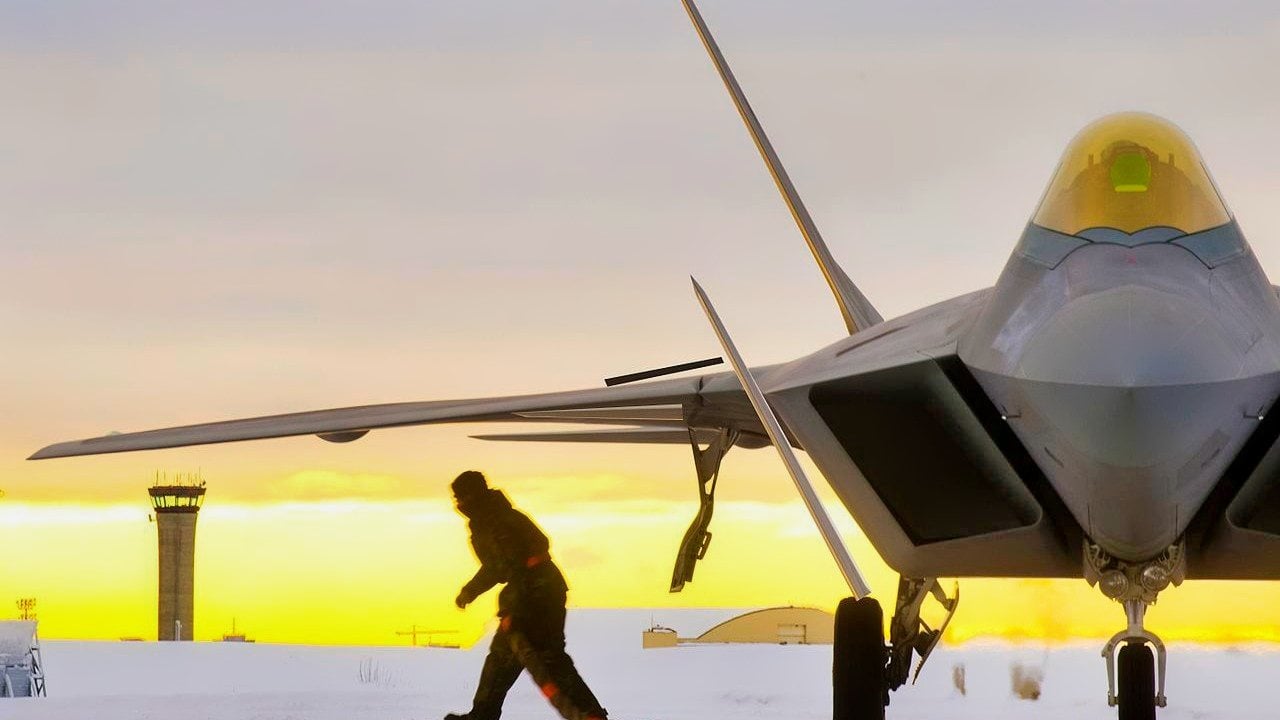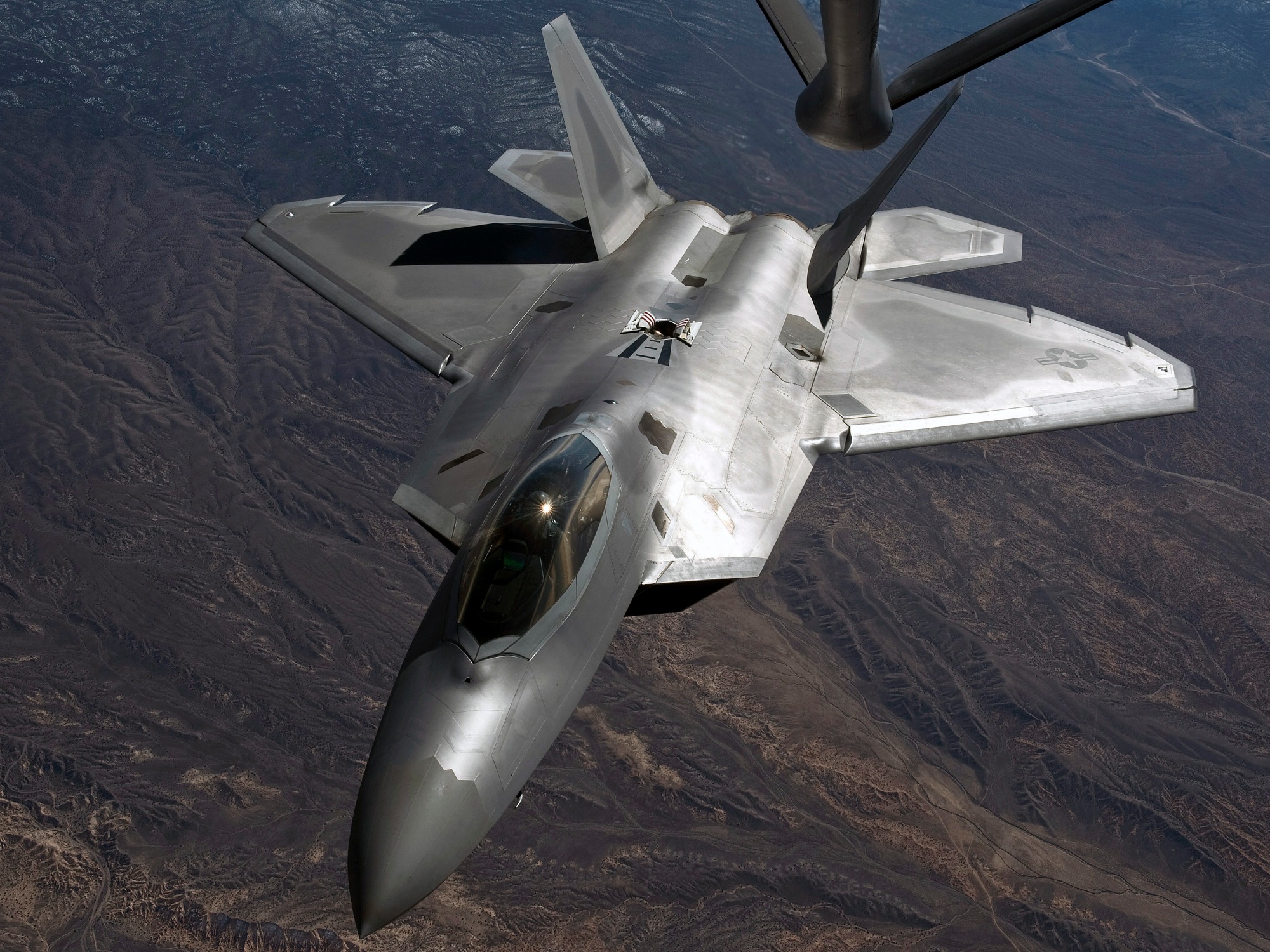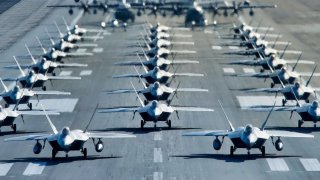F-22 Raptor Stealth Fighters Just Landed Right in China's Backyard
The U.S. 7th Air Force has announced the deployment of F-22 Raptors from the 199th Expeditionary Fighter Squadron to Osan Air Base in South Korea for integration training with Republic of Korea Air Force aircraft.
Summary and Key Points: The U.S. 7th Air Force has announced the deployment of F-22 Raptors from the 199th Expeditionary Fighter Squadron to Osan Air Base in South Korea for integration training with Republic of Korea Air Force aircraft.

-This move underscores the capabilities of the F-22, even as the Air Force plans to retire some of its older Block 20 models. These older aircraft have not been upgraded to the same level as the Block 30/35 models, and the cost and time required for upgrades are prohibitive.
-Despite this, the F-22 fleet will receive significant upgrades to keep it operational until the 2040s. The Government Accountability Office has questioned the decision to retire the Block 20 models, suggesting that the Air Force needs to provide more data on training and operational impacts.
China and North Korea are Watching: U.S. Air Force Showcases F-22 Capabilities in South Korea Training
The U.S. 7th Air Force announced this week that it will host several F-22s. The aircraft from the 199th Expeditionary Fighter Squadron, Joint Base Pearl Harbor–Hickam, Hawaii, arrived at Osan Air Base, South Korea, where over the next week the fifth-generation air superiority fighters will take part in integration training with the 7th Air Force and Republic of Korea Air Force aircraft.
F-22s are also currently operating out of Kadena Air Base, Okinawa, "to ensure continued steady-state fighter capabilities in the region, provide the opportunity for dissimilar training between 4th and 5th generation aircraft and test agile combat employment (ACE) capabilities on the Korean peninsula," the 7th Air Force said in a statement.
But while the mighty F-22 Raptor trains close to North Korea and China, this key stealth fighter might be flying on borrowed time.
The F-22 on the Outs?
This deployment is meant to highlight the capabilities of the Raptor, even as the U.S. Air Force has called to retire some of its oldest models of the fifth-generation aircraft.
As previously reported, that includes the F-22 Block 20, which is used only for training. That block of aircraft has not been updated to the same capabilities as the more advanced Block 30/35 aircraft now in service.
According to Airforce Technology, the air service currently operates 32 of the Block 20 Raptors, along with 150 Block 30/35 models. The publication also reported that upgrading the Block 20 aircraft to the Block 30/35 standard is estimated to cost more than $3.3 billion and take as long as 15 years, by which time the F-22 would certainly show its age.
The Air Force wants to retire the aging F-22s and use the money to focus on other programs – notably the Next Generation Air Dominance program to develop a sixth-generation fighter supported by a system of systems – but that doesn't mean it is entirely cutting out Raptor spending. The Air Force's F-22 fleet is still on track to receive more than $22 billion directed to upgrades that will keep the aircraft in service until the 2040s.
"The F-22 aircraft will undergo significant upgrades to improve its avionics, stealth capability, and overall survivability. These upgrades will be applied to 142 F-22s, addressing various maintenance and operational requirements," the Asia Times reported.
Factors to Consider
In its June 2024 report, the Government Accountability Office questioned whether all factors were being considered in the Air Force's call to retire the Block 20.
"In its proposal to Congress, the Air Force didn't note key details such as how to train without Block 20s or whether they should be upgraded instead of retired. Congress didn't have enough data to make a decision as was the case with a similar Air Force proposal we reported on in 2016," the GAO noted.
The watchdog then recommended that "the Air Force collect data to inform its proposals," and that lawmakers be provided with the information on key factors, including "training, mission capability, and testing, to inform that decision."

The GAO also said lawmakers need to be told how the Air Force could conduct F-22 training and testing if the Block 20 aircraft are retired, as the service failed to document any expected challenges that combat units might face "if mission-ready Block 30/35 aircraft are used for training or testing instead of the Block 20s."
Author Experience and Expertise: Peter Suciu
Peter Suciu is a Michigan-based writer. He has contributed to more than four dozen magazines, newspapers, and websites with over 3,200 published pieces over a twenty-year career in journalism. He regularly writes about military hardware, firearms history, cybersecurity, politics, and international affairs. Peter is also a Contributing Writer for Forbes and Clearance Jobs. You can follow him on Twitter: @PeterSuciu. You can email the author: [email protected].
All images are Creative Commons or Shutterstock.
From the Vault
Russia Freaked Out: Why the U.S. Navy 'Unretired' the Iowa-Class Battleships
Battleship vs. Battlecruiser: Iowa-Class vs. Russia's Kirov-Class (Who Wins?)


